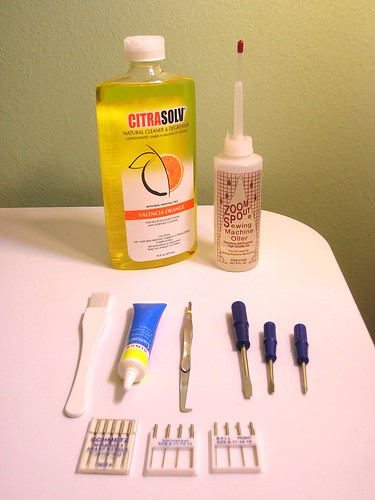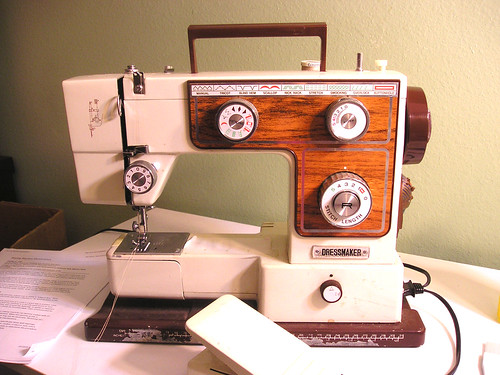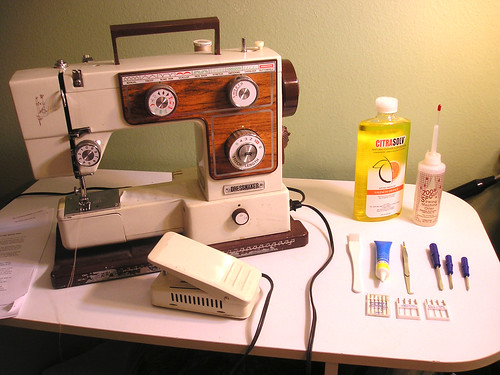For the past couple of years, though, the machine has been acting up. And it occurs to me that, you know ... I should probably clean it after all these years. ;)
New Mexico State University, for some reason I haven't tried to figure out because I have 2,000 other things to do before Friday, has directions on how to clean your sewing machine. They look ... rather intimidating. But if uncaking all the accumulated machine oil, dust and thread fuzz will make my machine run like new again, then that's the way the starship flies.
The bulk of the grime-fighting tools came from Jo-Ann. Check! (Why do I need a bottle of sewing machine lubricant and a bottle of sewing machine oil? Oh, well. Bought it anyway. It'll get used someday.) But this solvent stuff eluded me. I checked Jo-Ann, Home Depot, the automotive parts store ... None of them gave me an obvious choice on what sort of solvent to use against sewing machine oil and years of thread fuzz, so I didn't pick anything up. Plus, I have an instinctive aversion to putting turpentine or mineral spirits or acetone into my sewing machine. It's probably silly — but I also didn't want any of that stuff sitting around the house, unused, afterward. What am I going to do with 3/4 of a bottle of turpentine? The boyfriend and I wondered if citrus oil would work.
And lo! A little research online turned up Citra Solv ... which looked familiar; it's one of those things I've seen at the health food store but ignored as something I don't have a use for. Well, now I do. I'm going to try it on my sewing machine.
The final members of the grime-fighting team*:

The challenger:

Find out what happens, find out who wins, on the next episode of Star and Crossbones Iron Sewing Machine Cleaners!

*In the grime-fighters photo, from left to right, top to bottom: bottle of Citra Solv (to dissolve crud), sewing machine oil, dust/lint brush, sewing machine lubricant, tweezers (to pick out crud), screwdrivers (to help me disassemble, if and when I need to), and, in the bottom row, new sewing machine needles to use after the machine is clean. Because friends don't let friends use old, blunt sewing machine needles.
